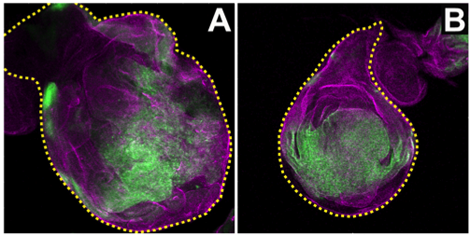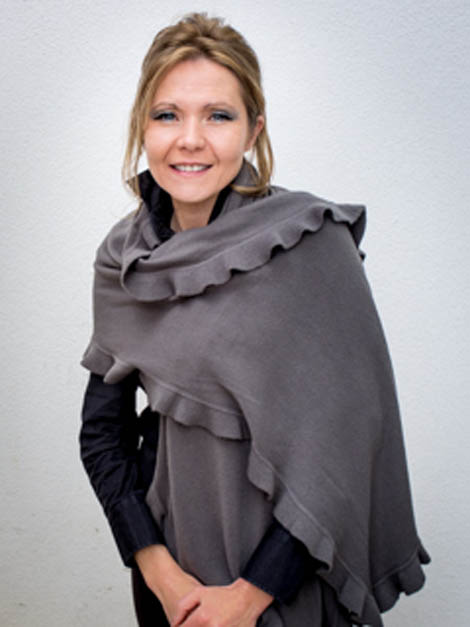 The activity of cancer-promoting genes can be controlled by the skeleton of the cells. In the latest issue of the journal Oncogene, Florence Janody and her group at the Gulbenkian Institute of Science identified a new mechanism by which the activity of a potent oncogene is limited by the cell's skeleton, limiting the development of tumors.
The activity of cancer-promoting genes can be controlled by the skeleton of the cells. In the latest issue of the journal Oncogene, Florence Janody and her group at the Gulbenkian Institute of Science identified a new mechanism by which the activity of a potent oncogene is limited by the cell's skeleton, limiting the development of tumors.
Cancer is a complex disease, in which cells undergo a series of changes that include changes in their architecture and greater ability to divide, survive and invade new tissues, forming metastases.
Oncogenes are a class of genes that encode proteins whose activity favors the development of tumors. One of these molecules, Src, is implicated in a large number of human tumors. However, it is not clear how healthy cells are able to stop the activity of this oncogene, preventing it from becoming malignant.
In the latest issue of Oncogene magazine, Florence Janody and his group, at the Gulbenkian Institute of Science (IGC), identified a new mechanism by which Src activity is limited by the cell skeleton, the cytoskeleton, limiting the development of tumors.
Using the fruit fly, Drosophila melanogaster as a model, Florence Janody and her group were able to stop the development of tumors induced by Src activity, through the genetic manipulation of the cytoskeleton, in tissues of this organism.

One of the main components of the cytoskeleton, actin, forms a kind of cables that constitute a network through which molecules move inside the cell. These cables are in constant tuning: their ends grow and shrink by adding or removing components through the action of proteins, the “actin-capping”, which regulate this process.
Florence Janody's group showed that the development of tumors is halted in the presence of high levels of the “thinner” actin capping protein. This “tuner” restricts the action of proteins that are normally activated by high levels of Src.
Although the precise molecular mechanism is not yet known, the hypothesis raised by these researchers is that the “tuner” creates a tension in the cytoskeleton cables that prevents the action of these proteins. Conversely, the Src oncogene activity is increased when the levels of actin capping protein are decreased, since the activated proteins are able to free themselves from the blocking effect of the cytoskeleton network and act in the cell, resulting in the development of tumors.
Thus, when the cytoskeleton network is not precisely controlled, oncogenes such as Src are not retained, observing the development of tumors.
Florence Janody says: "It's as if the cytoskeleton works like a net of 'barbed wire'. The winner of the competition between the cytoskeleton molecules and the Src oncogene, which fights the "barbed wire", will determine whether the cell will remain healthy or become cancerous.”
Beatriz García Fernández and Barbara Jezowska, first authors of the work, add: “Our work suggests that the appearance of mutations in molecules that regulate the cytoskeleton may have a significant role in inducing cancer development during the early stages of the disease , for allowing the release of the activity of these oncogenes.”
Src was the first oncogene to be discovered, in the 1950s, as being able to induce cancer. The importance of this discovery was recognized with the Nobel Prize in Physiology and Medicine in 1989.
This study was developed at the IGC and was funded by the Foundation for Science and Technology (Portugal).
Author: Ines Domingues (IGC)
Science in the Regional Press – Ciência Viva
Article reference
García Fernández, B., Jezowska, B., and Janody, F. (2013) Drosophila actin-Capping Protein limits JNK activation by the Src proto-oncogene, Oncogene, May 6, doi:10.1038/onc.2013.155
Main image caption:
A) Excessive tissue growth in the fruit fly larvae wing disc (tissue that gives rise to the wing in the adult fly) due to the presence of high levels of Src activity; B) This growth is moderate due to an increased expression of the “thinner” actin capping protein. Credits: Beatriz Gárcia Fernandéz, IGC.


















Comments